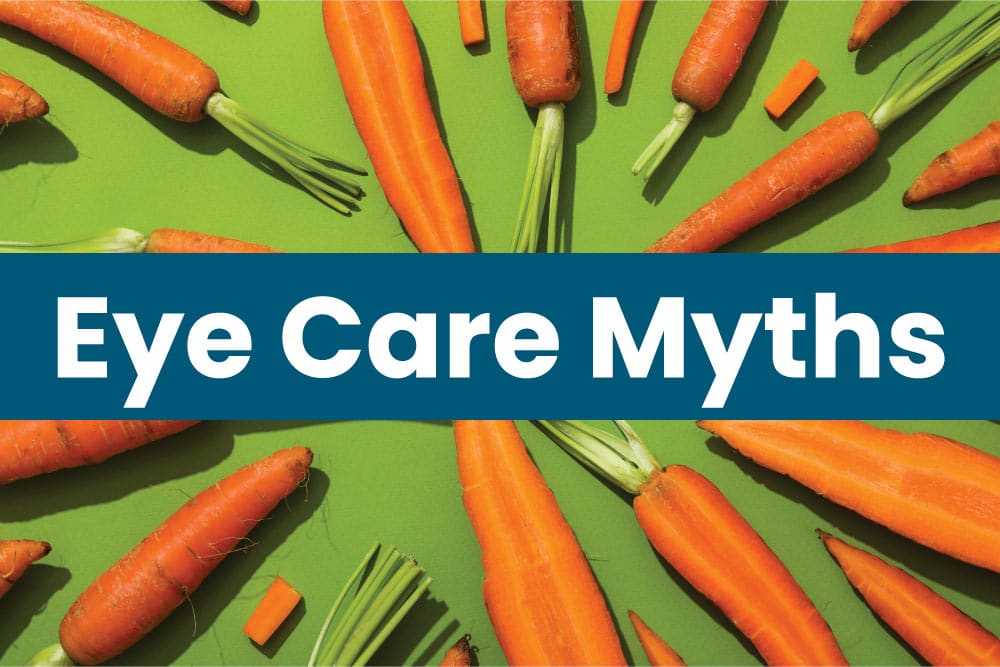
Have you ever been told to step away from the TV or warned that crossing your eyes might make them stay that way? Or maybe you believed that eating tons of carrots would give you perfect vision?
These are just a few of the many eye care myths that have been passed down over the years—some based on old science, others simply not true at all. Understanding what’s myth and what’s medically accurate is key to protecting your long-term vision health.
1. Looking at Screens Too Long Won’t Hurt Your Eyes – Myth!
Too much screen time can lead to Digital Eye Strain or Computer Vision Syndrome (CVS). According to the American Optometric Association (AOA), symptoms include:
-
Blurry vision
-
Headaches
-
Dry eyes
-
Neck and shoulder pain
To minimize discomfort, follow the 20-20-20 rule: Every 20 minutes, look at something 20 feet away for 20 seconds.
2. Reading Glasses Can Replace Prescription Glasses – Myth!
Reading glasses are fine for occasional use, especially if you only struggle with close-up tasks. But they don’t correct astigmatism, and they won’t match your unique prescription needs. Get a comprehensive eye exam to find the best solution for your eyes.
3. Sunlight Can’t Damage Your Eyes – Myth!
UV rays can harm your eyes just like they damage your skin. Over time, too much exposure can increase the risk of:
-
Cataracts
-
Eye growths (pterygium)
-
Eye cancer (rare but possible)
Always wear UV-blocking sunglasses and a wide-brimmed hat when you’re outside—even for kids and babies.
4. Putting a Contact Lens in Your Mouth Is Fine in a Pinch – Definitely Not!
This is one of the more dangerous eye care myths. Saliva contains bacteria that can cause serious infections. Always carry a contact lens case and solution—or at least have your glasses nearby.
5. Older Adults Don’t Need Frequent Eye Exams – Myth!
In fact, they need more frequent exams. As we age, we’re more prone to:
If you’re over 60, diabetic, or have a family history of eye disease, yearly comprehensive eye exams are crucial.
6. Only Boys Can Be Color-Blind – Myth!
Colorblindness is more common in males, but it’s not exclusive to them. The red-green colorblindness gene is carried on the X chromosome, and while females are less likely to inherit it, they can still be affected.
7. You Can’t Overuse Eye Drops – Myth!
Artificial tears (saline-based) are generally safe for regular use. But overusing redness-reducing drops (which contain decongestants) can irritate your eyes and even cause rebound redness. If you’re relying on drops daily, talk to your eye doctor.
8. Eating Carrots Will Drastically Improve Your Vision – Myth with a Grain of Truth
Carrots contain beta-carotene, which the body converts to Vitamin A, essential for eye health, especially night vision. But eating more carrots won’t give you super vision. A balanced diet with leafy greens, sweet potatoes, and fish is more effective.
9. Crossing Your Eyes Can Make Them Stay That Way – Myth!
It’s harmless to cross your eyes voluntarily. But if your child’s eyes cross involuntarily, it could be a sign of strabismus, which needs professional evaluation and treatment.
10. Sitting Too Close to the TV Will Damage Your Eyes – Outdated Myth!
This eye care myth dates back to early TVs, which emitted radiation. Today’s screens are safe; sitting close won’t damage your vision. That said, if your child constantly sits too close, it may be a sign of nearsightedness.
Don’t Let Eye Care Myths Affect Your Health
When it comes to your eyes, relying on outdated advice or common eye care myths can do more harm than good. Protect your vision by staying informed, practicing good habits, and scheduling regular exams with a licensed eye care provider.
Got questions about your eye health or need to schedule an appointment? Contact us today—we’re here to help you see clearly and confidently.

